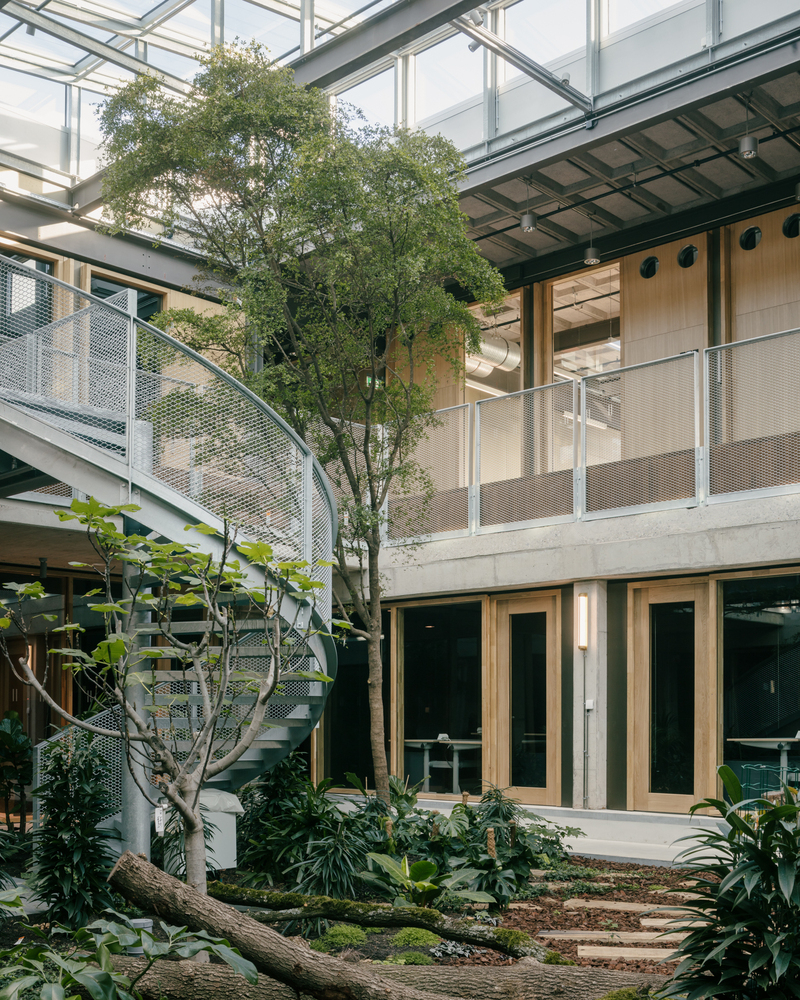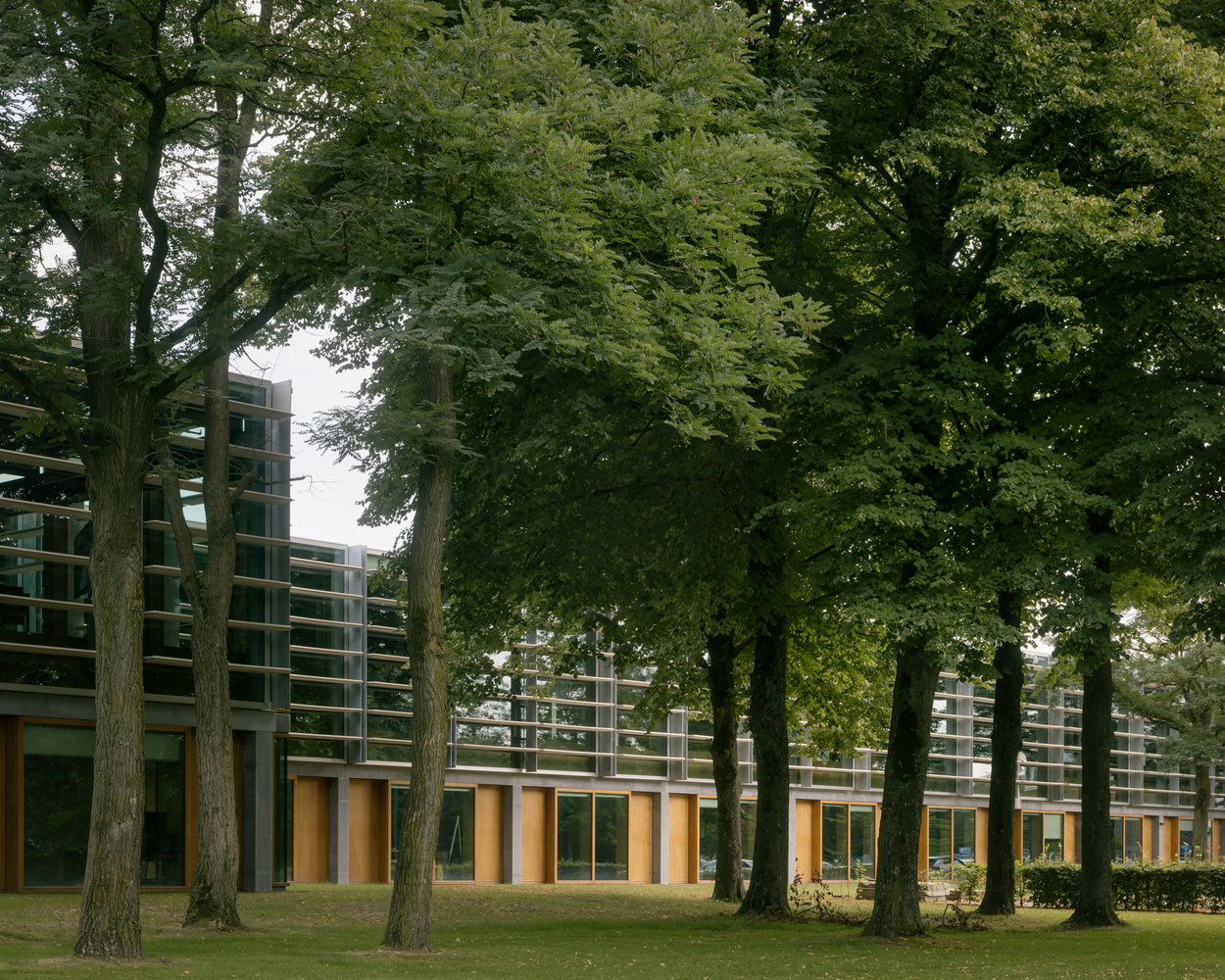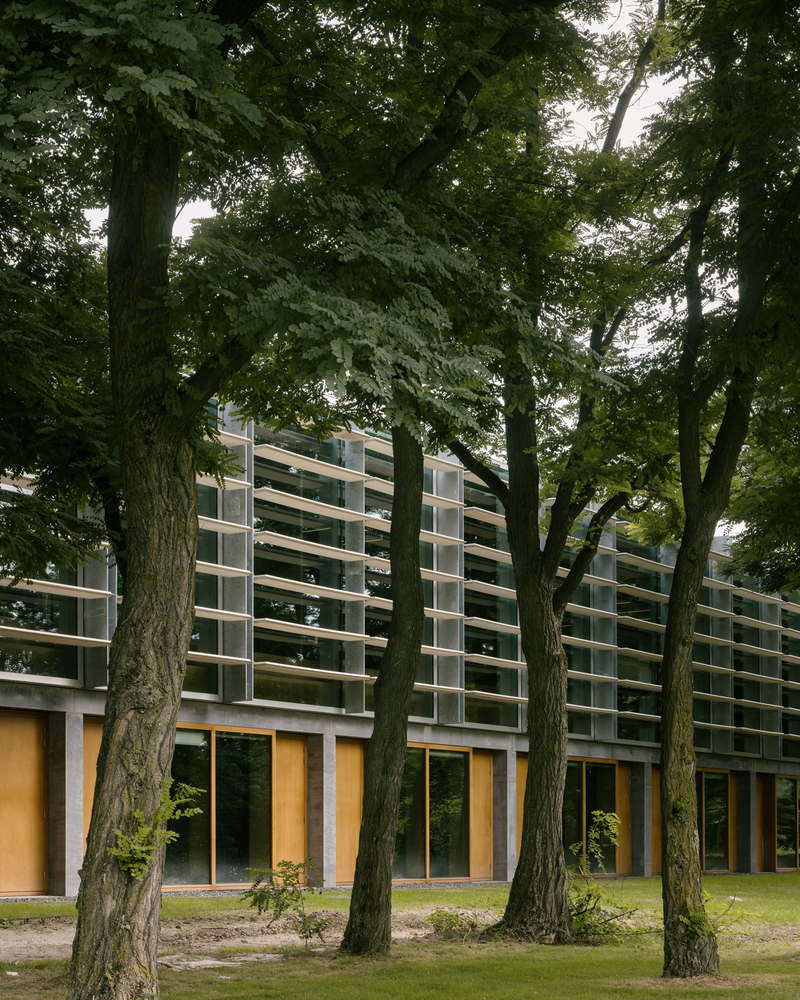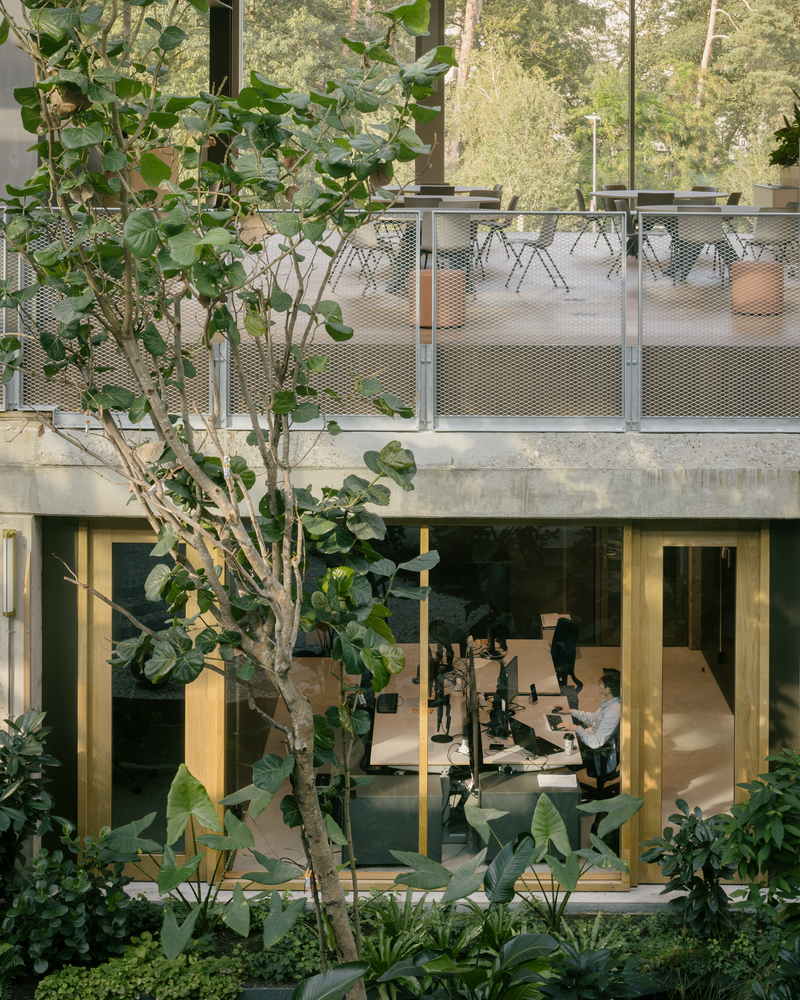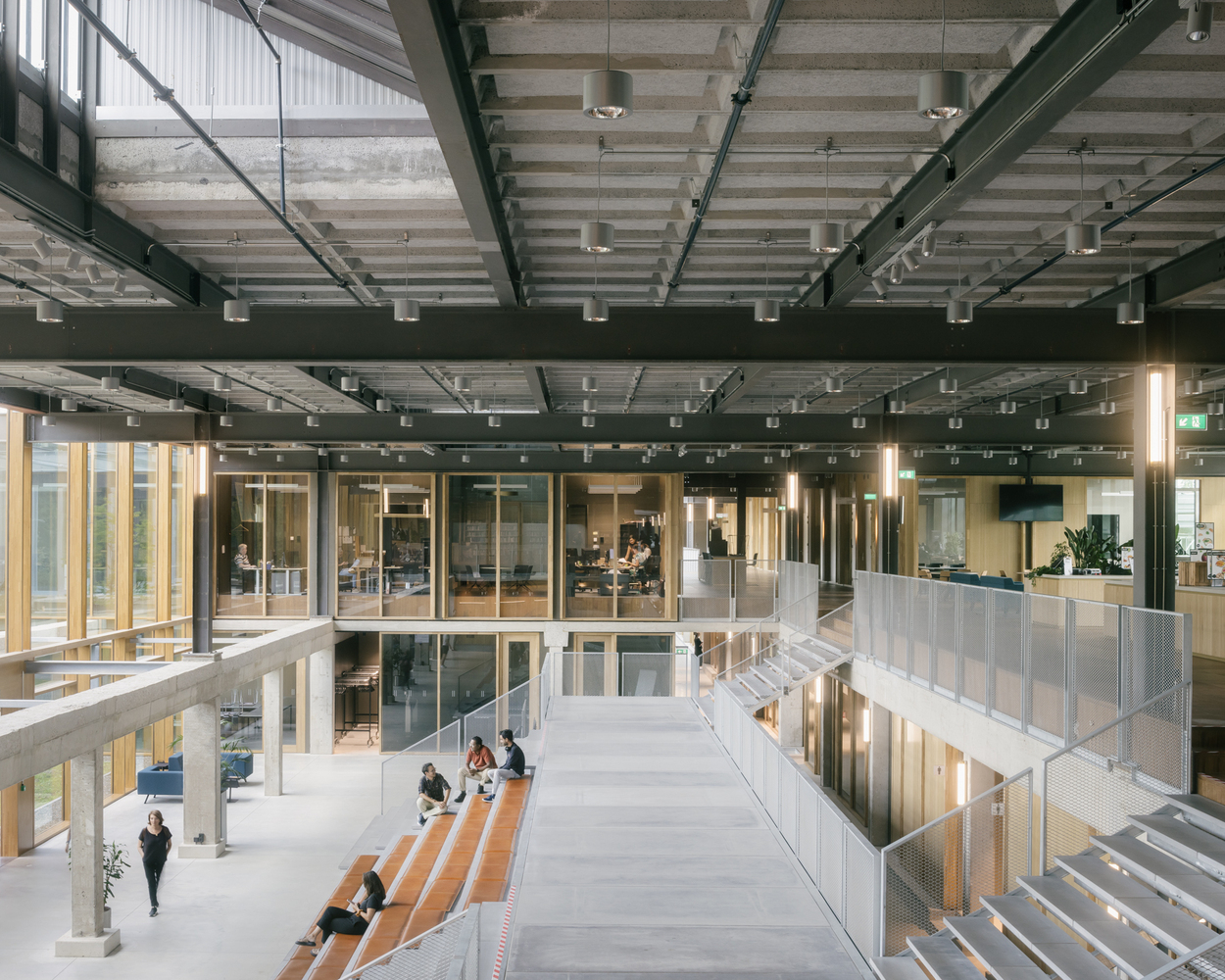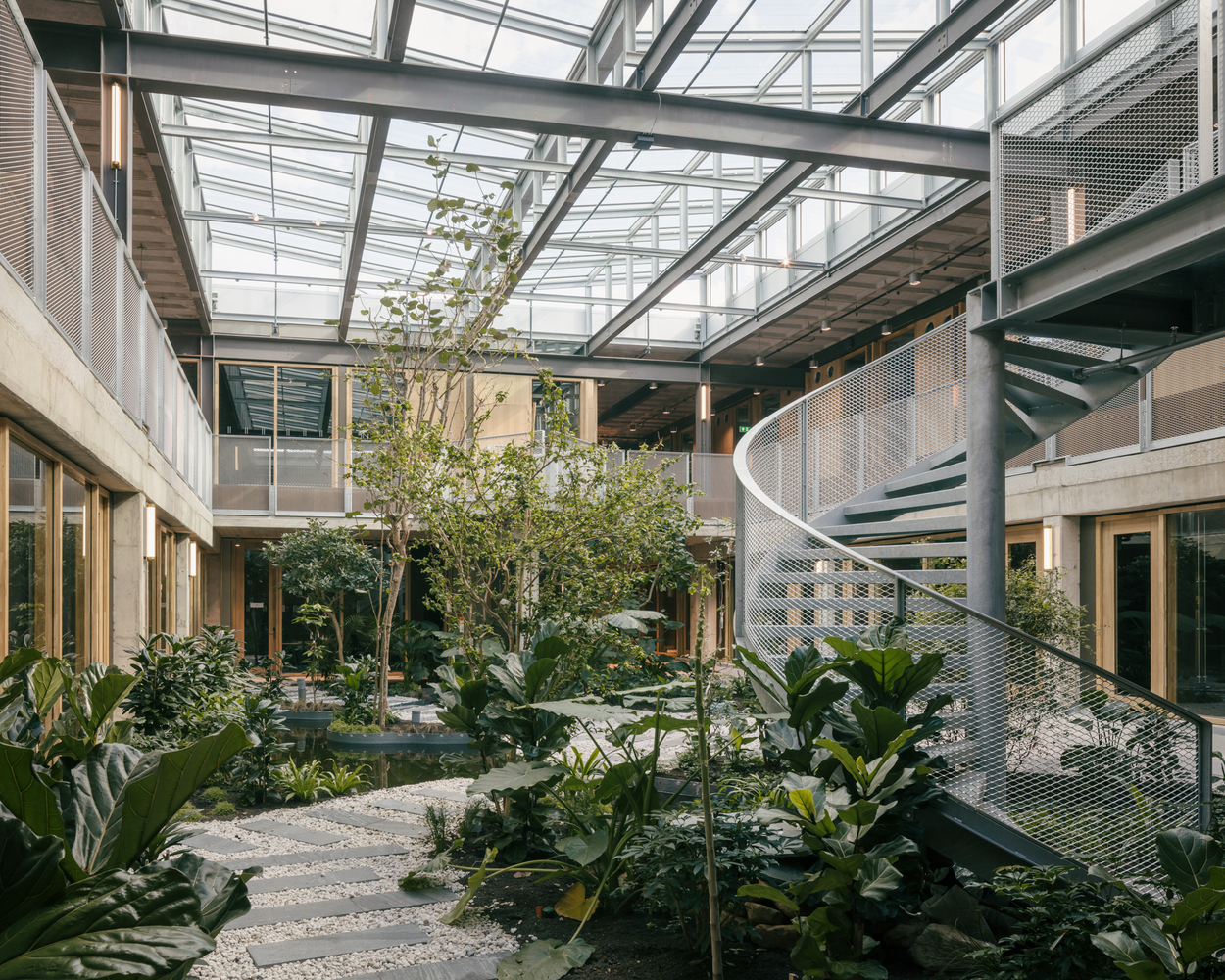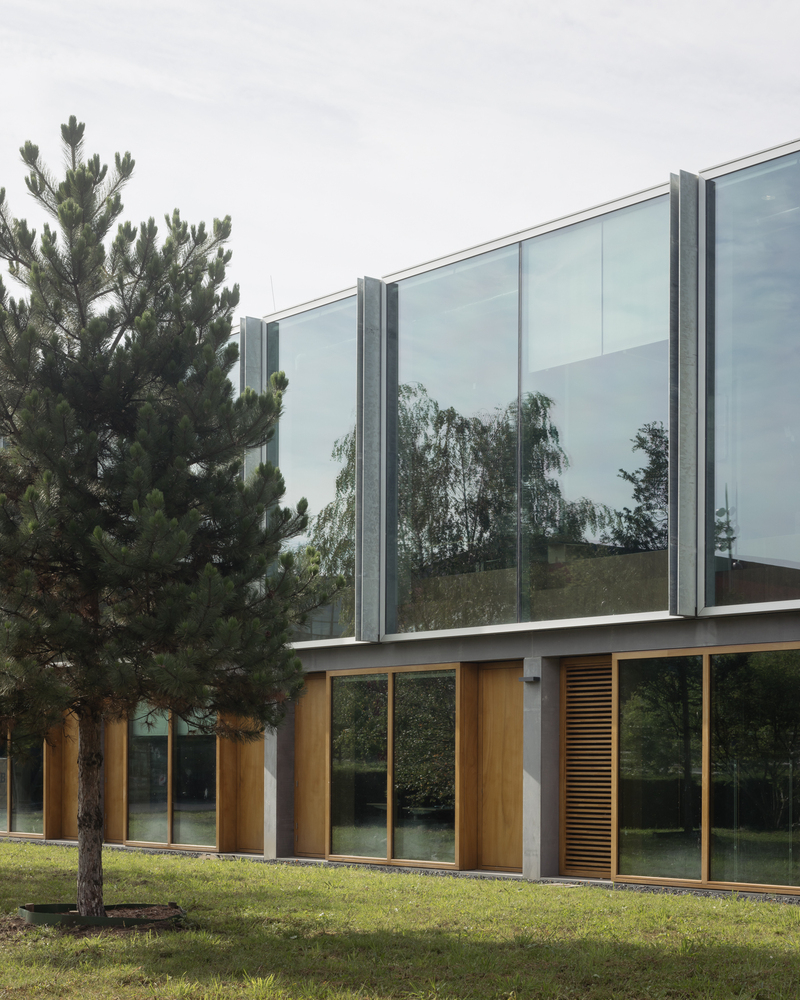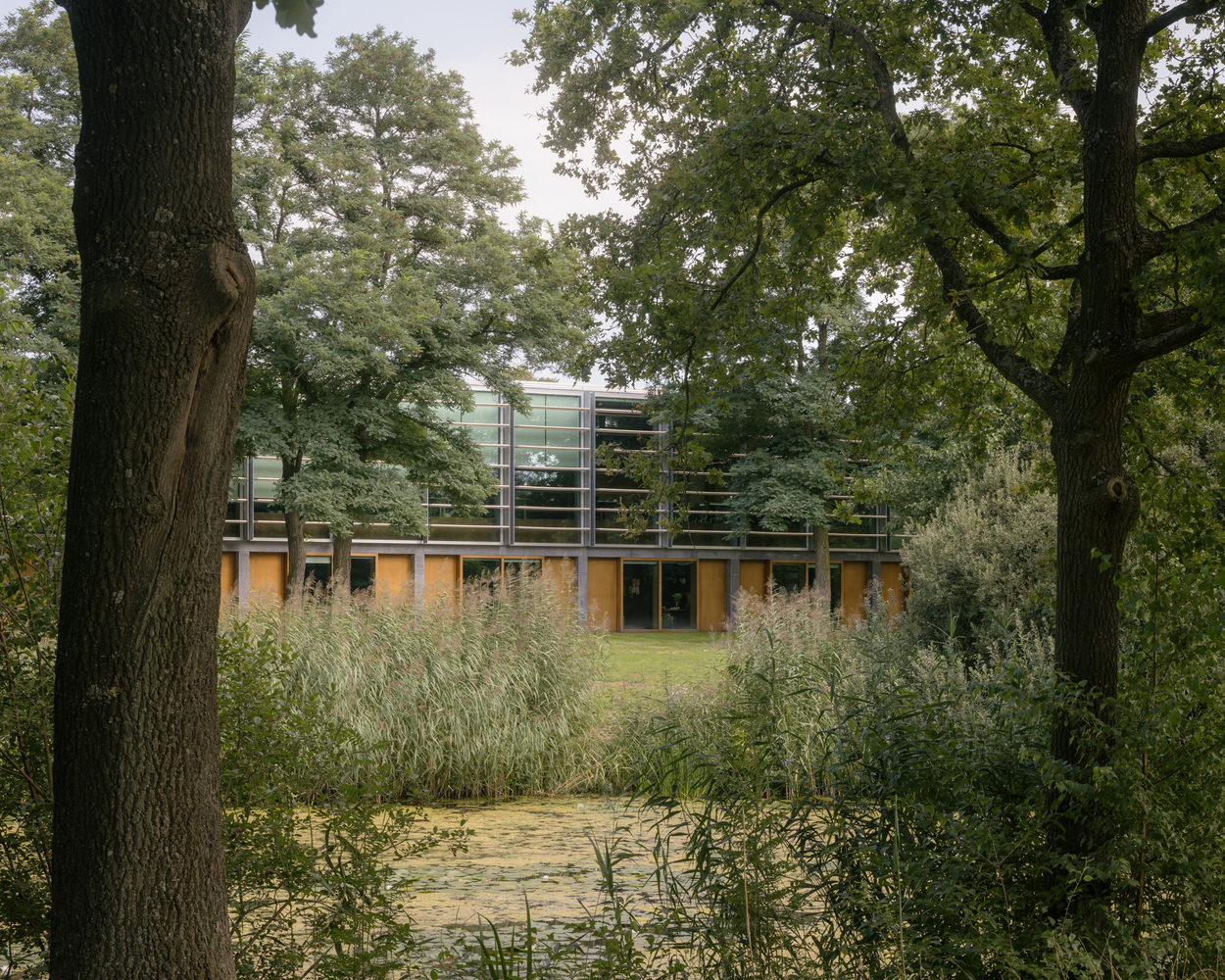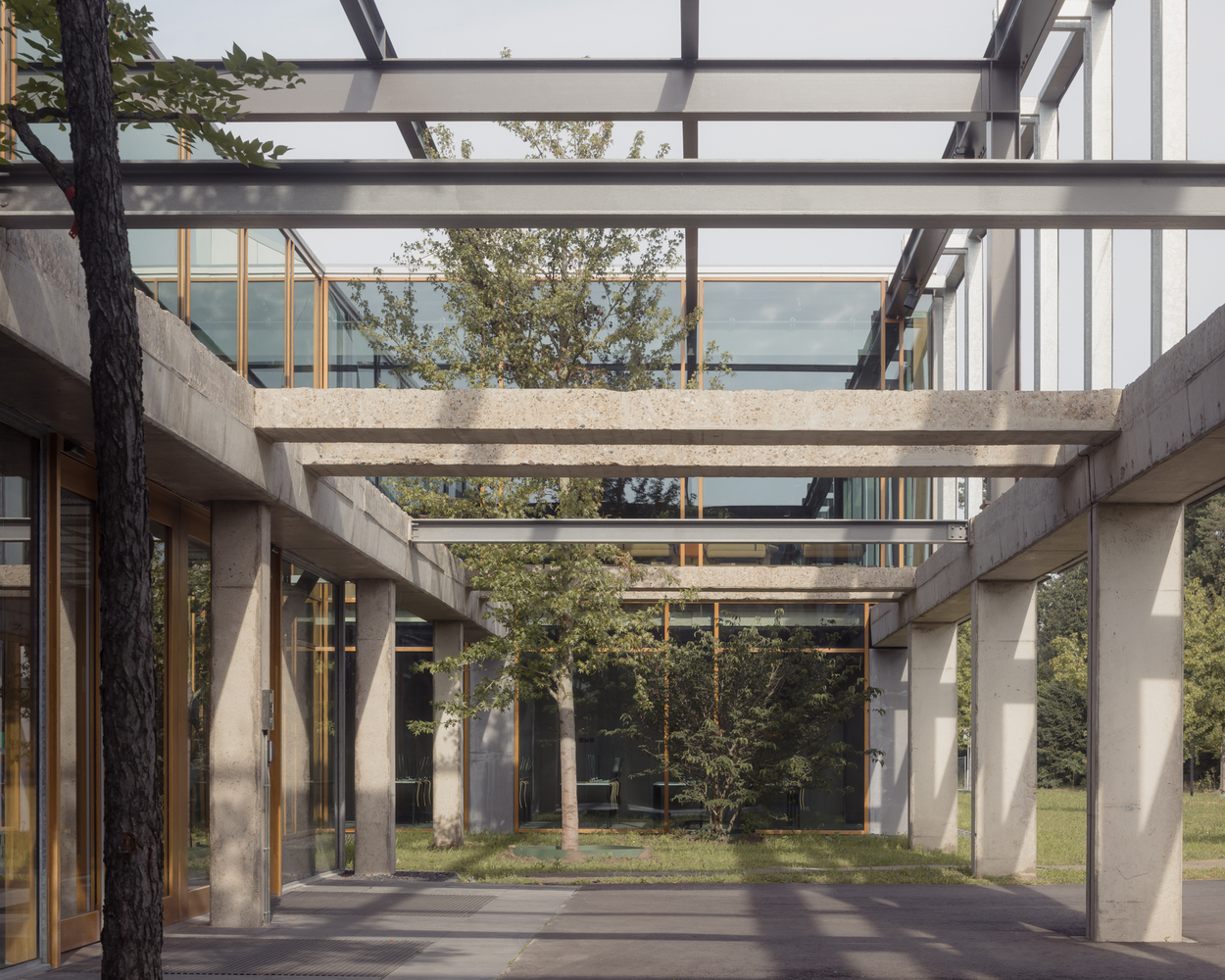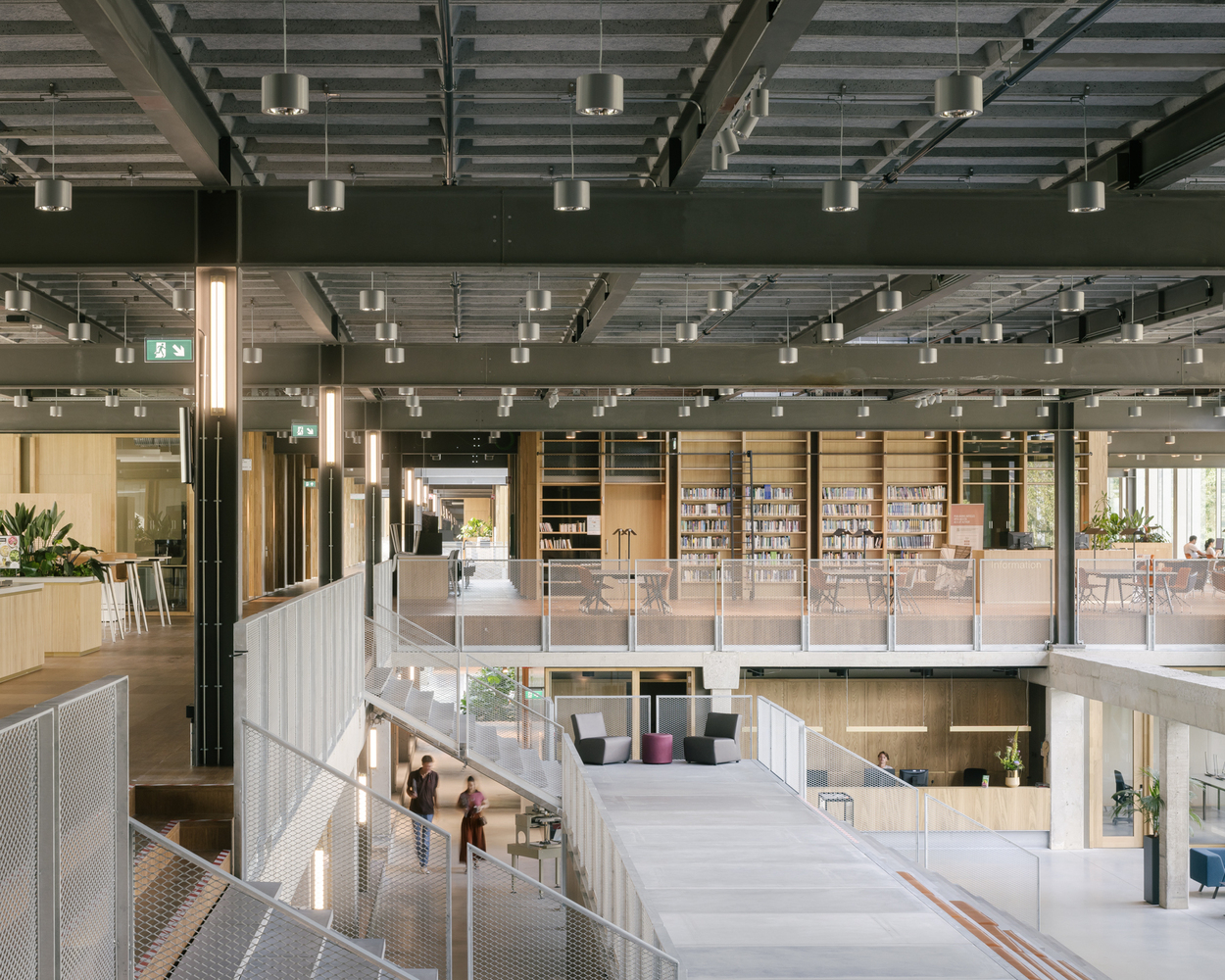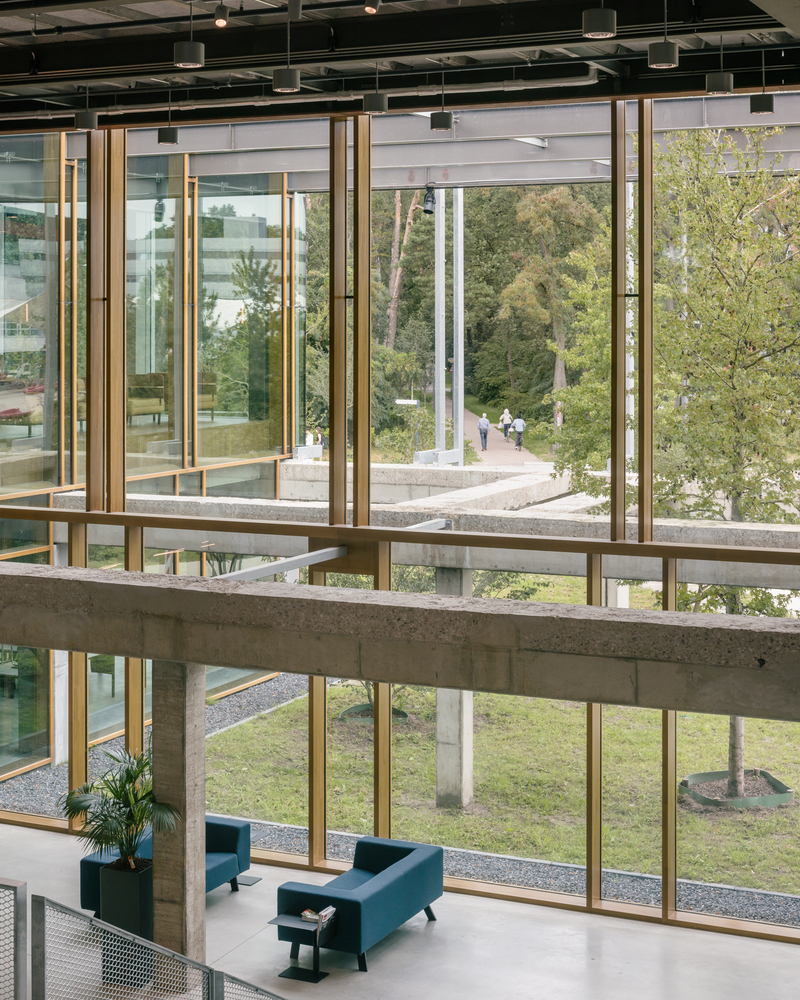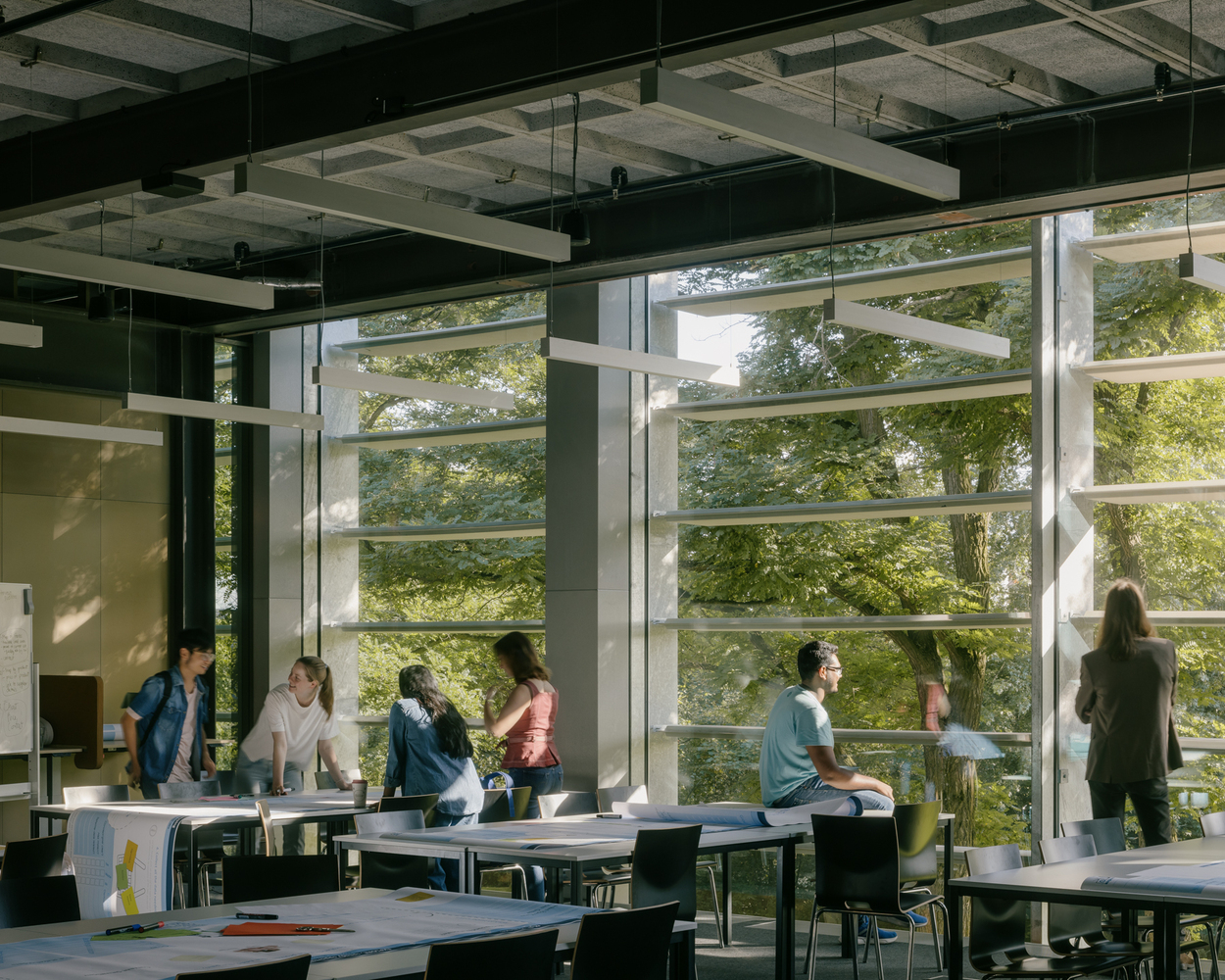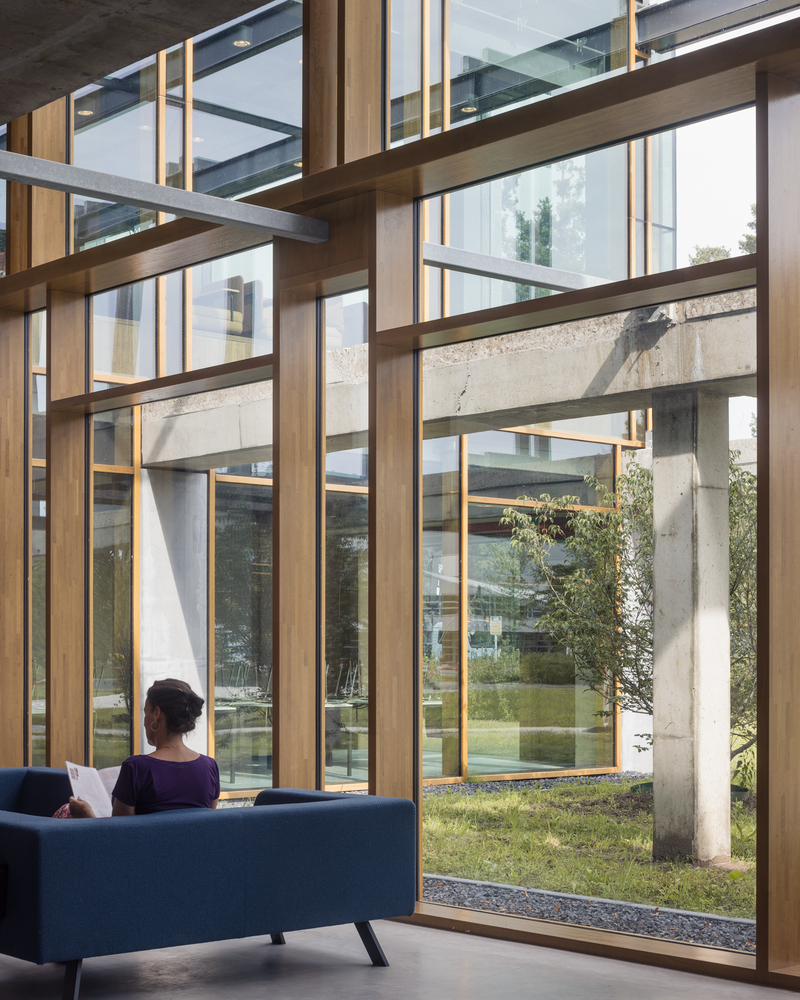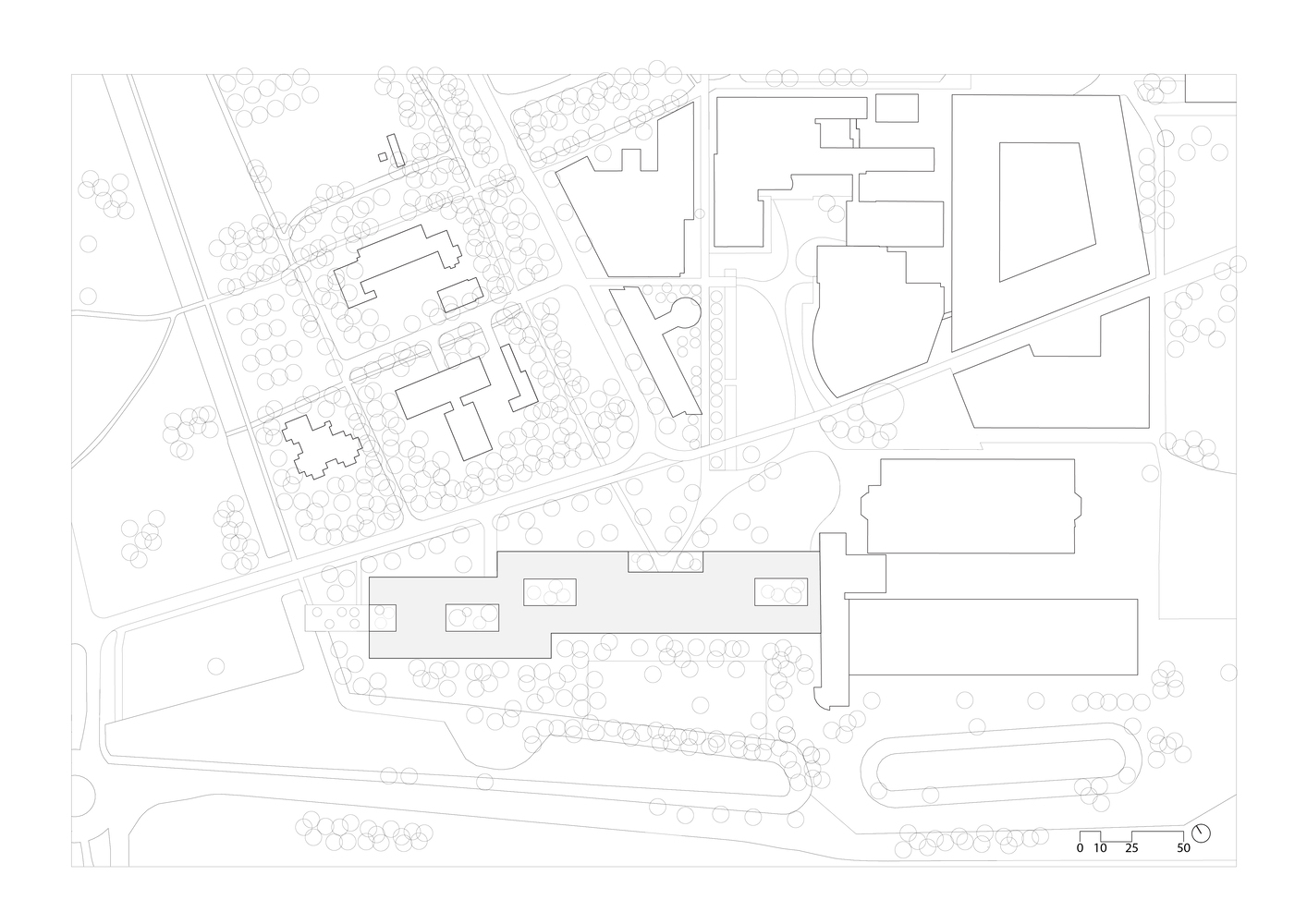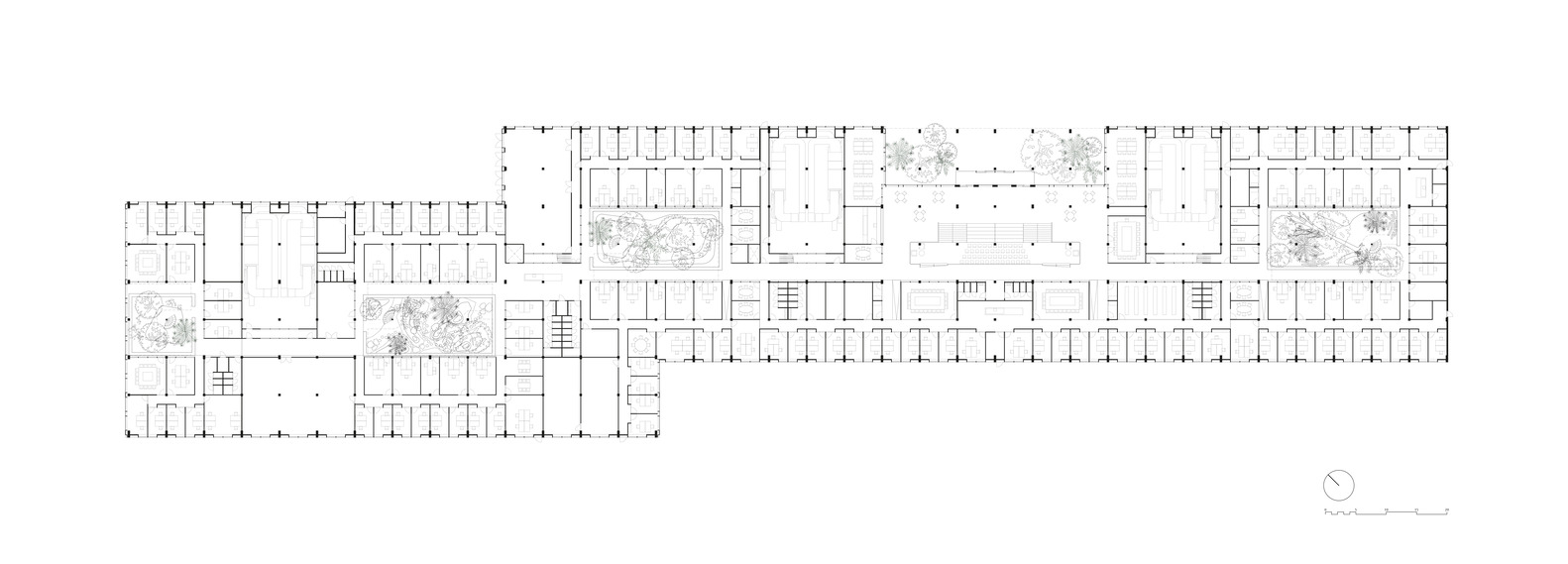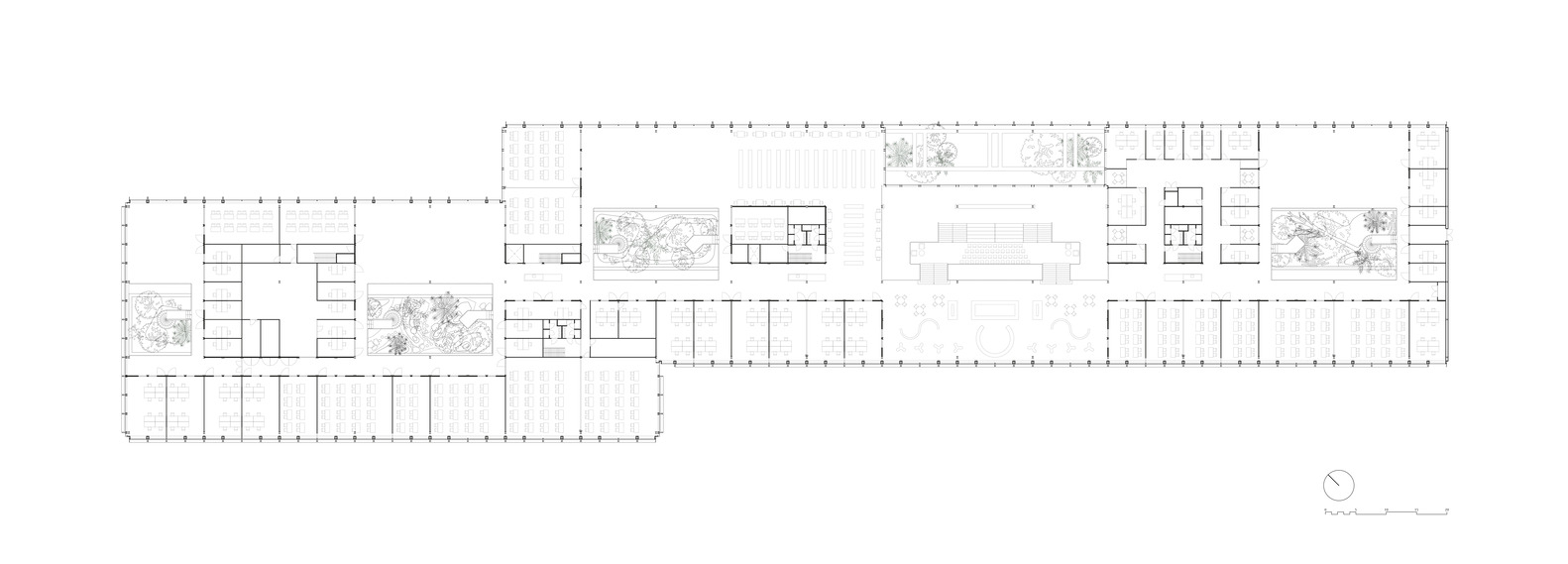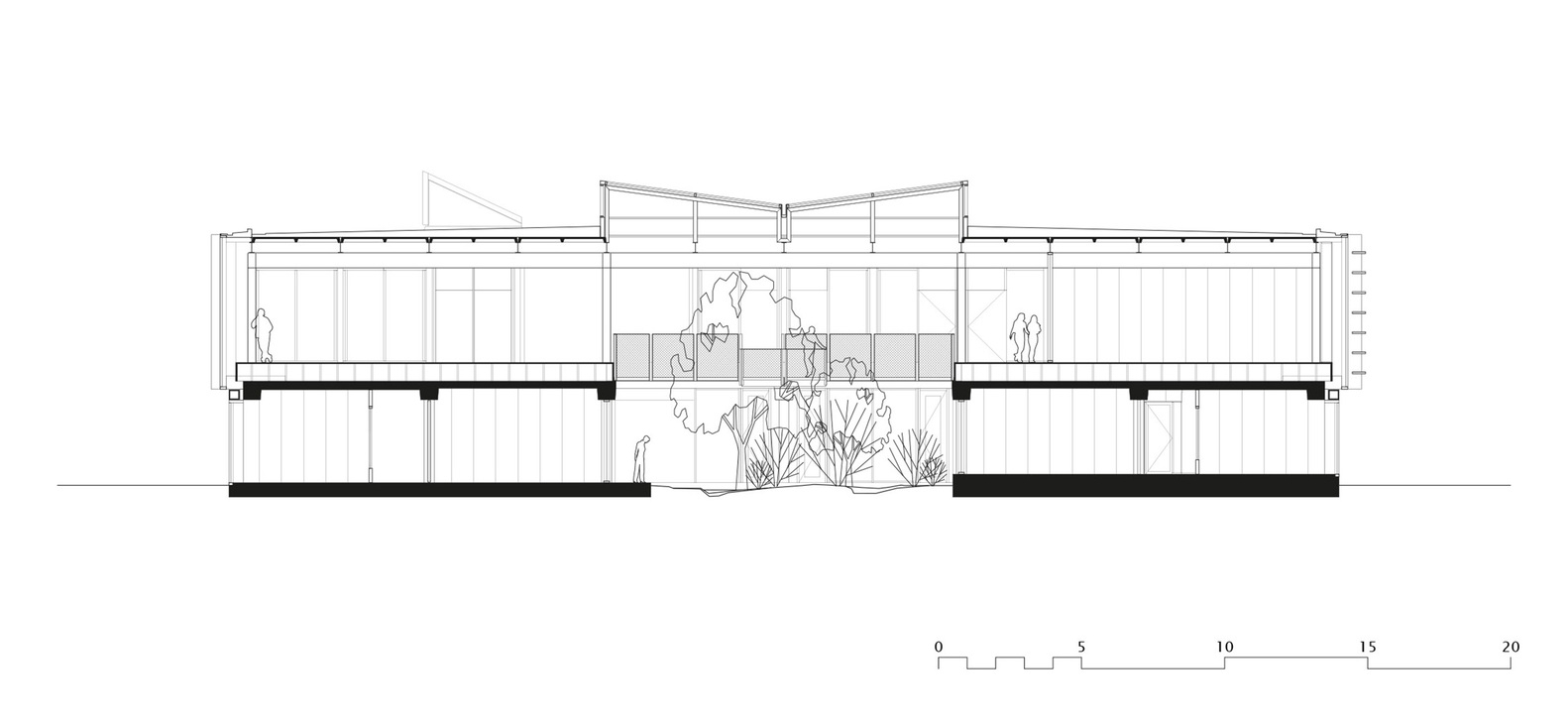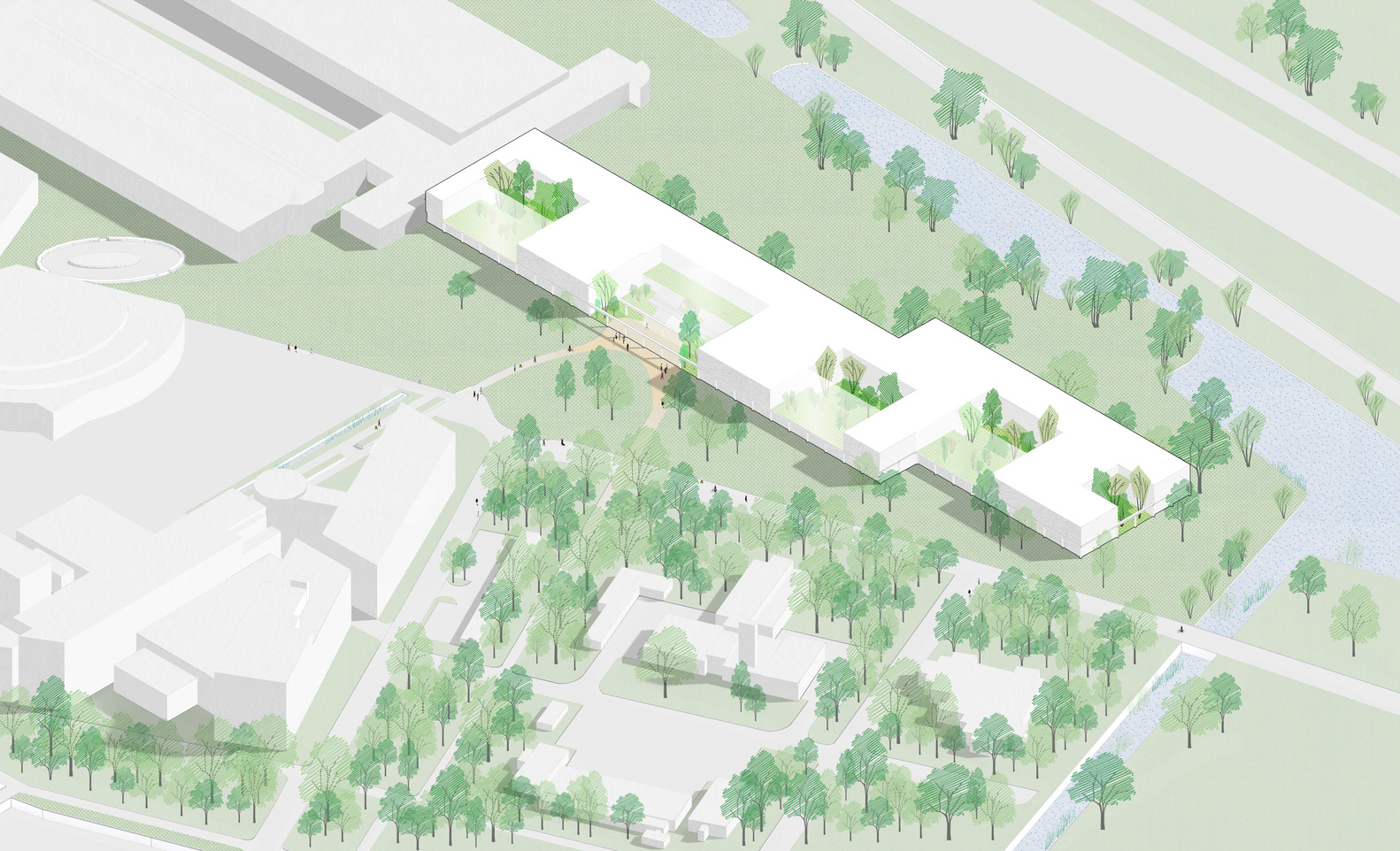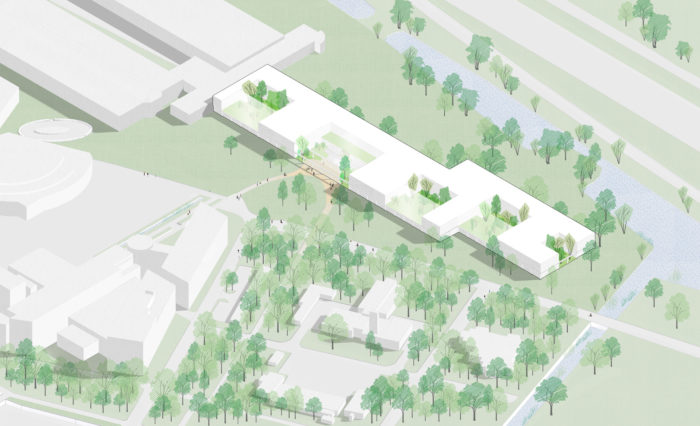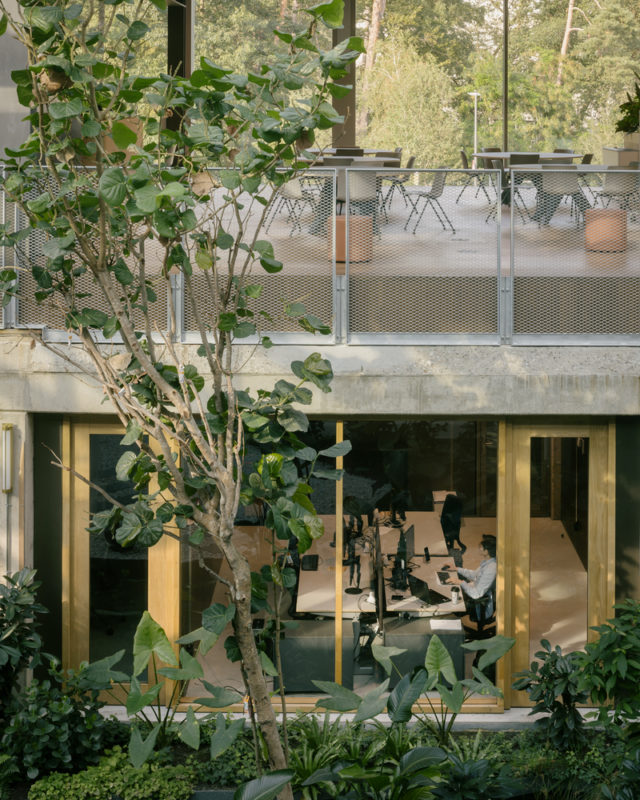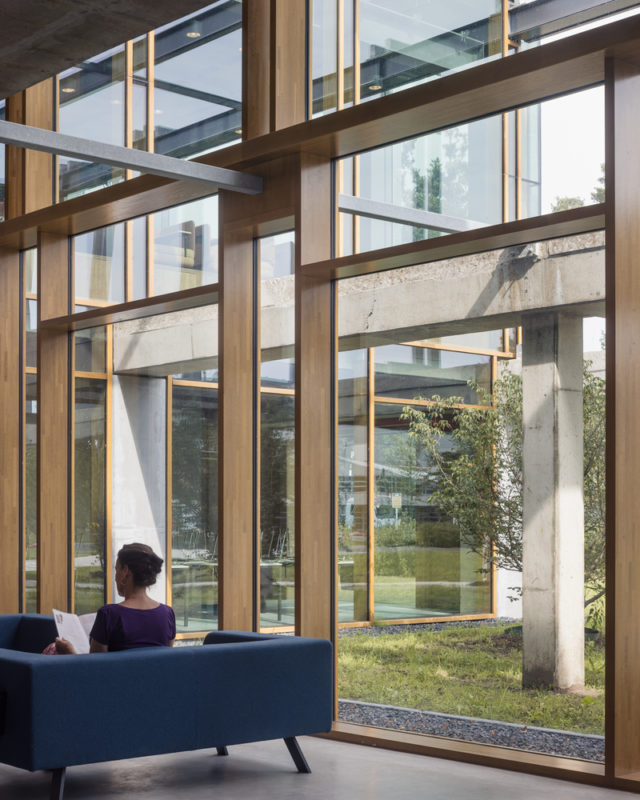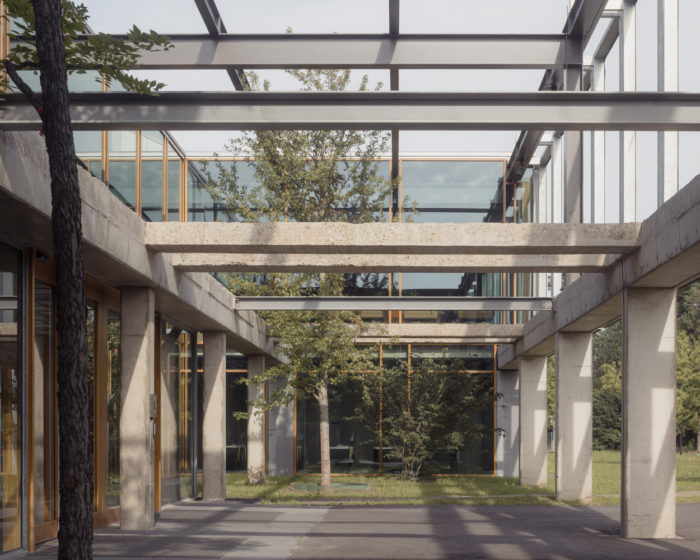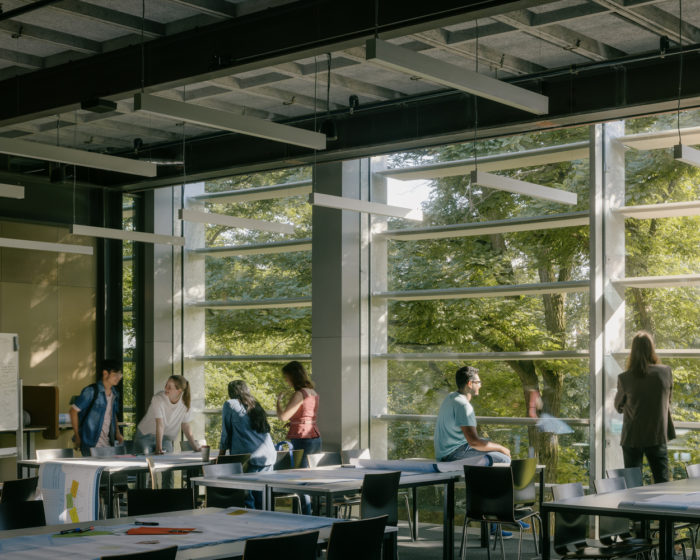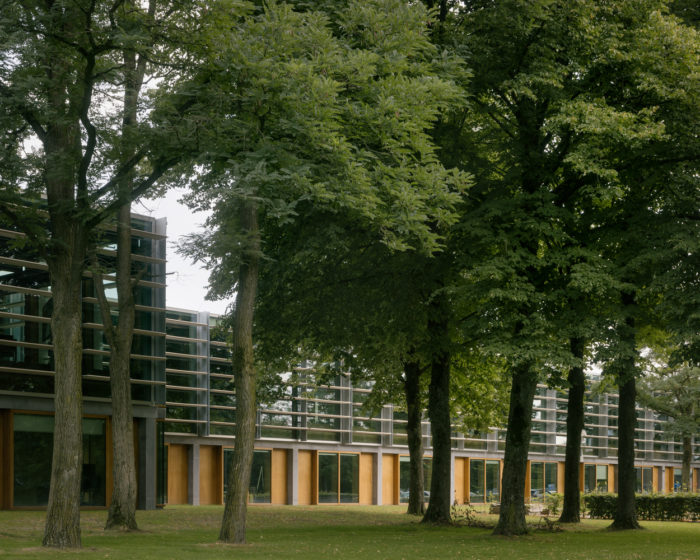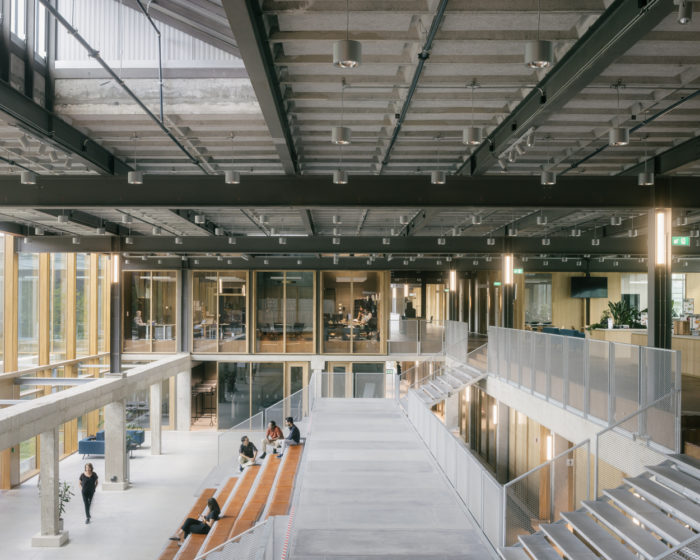About International Institute For Geo-Information Sciences
International Institute for Geo-Information Sciences (ITC) is a major faculty at the University of Twente. It is a gathering place for students, researchers, and entrepreneurs interested in sustainable solutions. Designed by Civic Architects, VDNDP, Studio Groen+Schild, and DS Landscape Architects, the building measures 13,605 square meters. It features a range of facilities, including classrooms, laboratories, offices, kitchens, and three courtyard gardens.
International Institute for Geo-Information Sciences decided to renovate Langjizds lab instead of building a new lab. The existing building is quite large, 220 meters long and 38 meters deep, with low floors and ceilings. The new design effectively modifies the building for its intended use with only one intervention. Four atriums added to the building provide access to greenery, fresh air, and natural daylight.
The Location Of International Institute For Geo-Information Sciences
The construction is located at the Drienerlo property, which is known for its modernist homes and luxurious green environment. The layout of International Institute for Geo-Information Sciences construction seamlessly blends architecture and the encircling landscape. The atria inside the construction connect the indoors and the outside. These atria characteristic gardens provide habitats for numerous types of flowers and animals, selling easy air and a stress-free work environment.
The panorama surrounding the International Institute for Geo-Information Sciences is expansive and includes various plant life and trees, which might be deeply rooted in over a meter of soil, creating miniature ecosystems. One of the atria acts as the primary front, situated at the center of the construction. In this area, the façade of the building recedes, permitting the panorama to fold inward, with trees growing into the structure itself.
The structure symbolizes the ITC’s sustainable assignment. The weather and pursuits influence the building’s layout to preserve the “brutalist” structure. The workplaces are placed on the cooler floor, at the same time as larger educational spaces are on the higher ground. To save you from overheating in the summertime, sunshades that have been reused are mounted on the south aspect. The mechanical structures for both floors are consolidated in an “air plenum” on the raised floor, which allows the original concrete ceiling to remain visible and maximizes the floor ground’s top without needing additional ductwork. The atria function as the construction’s green lungs, clearly exhausting sparkling air.
The construction is designed with interaction in thoughts, with departments and teachers coming together. The “Social Heart” inside the front hall is a critical meeting and dining vicinity. The atria cluster scientific departments to ensure all spaces have a view of the landscape. Different regions like schooling, workplaces, labs, and examination areas are combined collectively to encourage collaboration. The decreased degree offers spaces for concentration, while the higher degree has large, more dynamic areas.
The present shape in the architecture is embraced, with the concrete and metal framework being seen, which includes its imperfections and signs and symptoms of use. Saw cuts screen where flooring once existed, and old columns stand as overgrown ruins inside the atria. Oak facades and bamboo floors add a warm temperature to the layout. The substances are strong, the details are refined, and no paint is used.
The production follows the guiding precept of finishing. Everything, which includes vintage and new factors, partitions, stairs, furniture, and sprinklers, is designed on a grid of 1550mm. The façade contrasts the unique architecture with a concrete floor ground and a tumbler higher level. Wooden frames suggest the construction’s new purpose. The new construction is a sustainable degree for ITC to exhibit its identity and values.
Project Info:
Architects: Civic Architects, VDNDP
Area: 13605 m²
Year: 2023
Photographs: Stijn Bollaert
Lead Architects: Civic Architects &VDNDP
Building Physics: Arup
Interior Architecture: Studio Groen + Schild
Program / Use / Building Function: University faculty with around 700 students and employees, education spaces, labs, sound studio, library/learning centre, restaurant, auditorium, offices
Installations: Valstar Simonis
Structural Engineering: Schreuders bouwtechniek
Light: Joost de Beij
Building Contractor: Dura Vermeer Bouw Hengelo/Trebbe
Installations Contractor: Croonwolter&dros
City: Enschede
Country: The Netherlands
